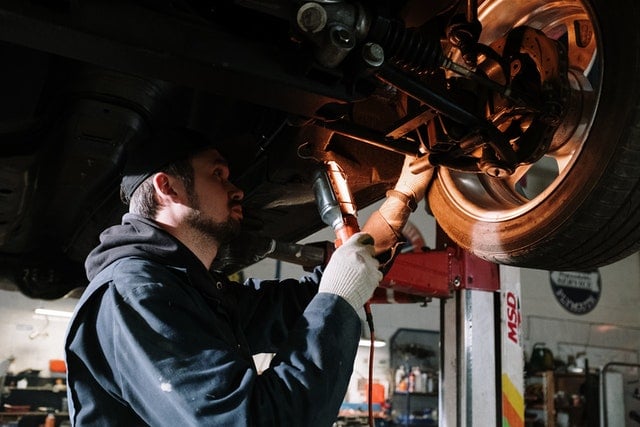An on-board diagnostics (OBD) reader, also called a diagnostic scanner or a scan tool, is a device used to read the memory and data error recorded on your vehicle’s systems. It allows you to create a connection between your car and a mobile app or diagnostic software.
Once the connection goes through, you can easily access all your car’s data from your phone. You can now read the fault codes stored in your car’s engine control unit (ECU). It will also display the probable reasons for the error present in your vehicle.
How Does an OBD Reader Work?
Every modern vehicle has a fault memory in its system. It is in charge of storing technical defects or trouble codes that may occur in your car. To access these problems, you need to connect your OBD reader to the OBD plug of your vehicle.
You can usually find the OBD reader underneath your dashboard near the service airbag and SRS light. Once plugged in, the OBD reader can start reading the information from your car. You can also access the data from your mobile app if you are not using any diagnostic software.
Why Should You Get an OBD Reader?
An OBD reader is a perfect companion for you if you are a car mechanic who usually does seat belt repairs, seat belt replacement, and more. It will save you valuable time in diagnosing your customers’ vehicular problems since everything is done with a mobile app or diagnostic software.
It is also the most convenient option for the do-it-yourself mechanic. Instead of going to a car shop, you can use this handy option in the comfort of your home. It is easy to operate, and it comes in a pocket-size device without additional diagnostic equipment in tow.
How Does an OBD Reader Differ from an OBD2?
The OBD2 interface is used in newer cars, and it was first introduced in the market to create a uniform system. It has the same purpose as an OBD reader, and it also acts as an interface between ECUs and the diagnostic device.
Since it is more advanced than an OBD reader, the OBD2 can read more fault codes and display more data. It can tell you when the problem occurred, what caused it, and how long it will last. It is also useful if you have an older vehicle since an OBD reader cannot access this information.
What Are Some Basic Tips for Buying an OBD Reader?
Before purchasing an OBD reader, you need to consider several things first. For one, it should be compatible with the software and computer you use. If you buy the wrong version, you cannot read the fault codes stored in your car.
You will also have difficulties getting accurate information. On the other hand, you need to find the correct plug you can use in your car. The universal plug is the ideal option for this.
How Much Do You Need to Spend?
There are many OBD readers under $100 available in the market. The least expensive OBD scanner and third-party mobile can cost around $20 combined. The only downside is you need to configure these two to work together and connect with your car.
You can find OBD readers worth around $60. While it is pricier, it is more convenient since it has applications that go with the OBD reader. It makes installation and connection easier for you, especially if you find it difficult to use technology such as this.
End Note
In the end, an OBD reader is a handy tool you can use in your vehicle. You can easily read the stored fault codes in your car’s ECU. It is the most convenient tool if you are the do-it-yourself mechanic.
With that said, if you’re looking for a workshop that uses OBD readers and provides seat belt replacements in the US, you have come to the right place. Safety Restore endeavors to offer our customers with the best seat belt replacement service in the entire country. Contact us today to get parts of your vehicle fixed!
